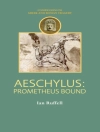Nathaniel Hawthorne’s classic American novel The Scarlet Letter follows Hester Prynne, a woman living in the rigid Puritan society of 17th century Boston. Condemned as an adulteress and forced to wear a scarlet A on her dress, Hester refuses to name the father of her child, born out of wedlock. Her quiet dignity in the face of persecution only serves to further enrage many of the townspeople. Separated from society, Hester begins to ask questions about the nature of sin and redemption and comes to conclusions unthinkable to her fellow Puritans. A story of perseverance in the face of ignorance and injustice, The Scarlet Letter enjoyed immediate and lasting success.
عن المؤلف
Nathaniel Hawthorne was born on July 4, 1804, in Salem, Massachusetts, where his birthplace is now a museum. William Hathorne, who emigrated from England in 1630, was the first of Hawthorne’s ancestors to arrive in the colonies. After arriving, William persecuted Quakers. William’s son John Hathorne was one of the judges who oversaw the Salem Witch Trials. (One theory is that having learned about this, the author added the ‘w’ to his surname in his early twenties, shortly after graduating from college.) Hawthorne’s father, Nathaniel Hathorne, Sr., was a sea captain who died in 1808 of yellow fever, when Hawthorne was only four years old, in Raymond, Maine. Hawthorne attended Bowdoin College at the expense of an uncle from 1821 to 1824, befriending classmates Henry Wadsworth Longfellow and future president Franklin Pierce. While there he joined the Delta Kappa Epsilon fraternity. Until the publication of his Twice-Told Tales in 1837, Hawthorne wrote in the comparative obscurity of what he called his ‘owl’s nest’ in the family home. As he looked back on this period of his life, he wrote: ‘I have not lived, but only dreamed about living.’ And yet it was this period of brooding and writing that had formed, as Malcolm Cowley was to describe it, ‘the central fact in Hawthorne’s career, ‘ his ‘term of apprenticeship’ that would eventually result in the ‘richly meditated fiction.’ Hawthorne was hired in 1839 as a weigher and gauger at the Boston Custom House. He had become engaged in the previous year to the illustrator and transcendentalist Sophia Peabody. Seeking a possible home for himself and Sophia, he joined the transcendentalist utopian community at Brook Farm in 1841; later that year, however, he left when he became dissatisfied with farming and the experiment. (His Brook Farm adventure would prove an inspiration for his novel The Blithedale Romance.) He married Sophia in 1842; they moved to The Old Manse in Concord, Massachusetts, where they lived for three years. There he wrote most of the tales collected in Mosses from an Old Manse. Hawthorne and his wife then moved to Salem and later to the Berkshires, returning in 1852 to Concord and a new home The Wayside, previously owned by the Alcotts. Their neighbors in Concord included Ralph Waldo Emerson and Henry David Thoreau. Like Hawthorne, Sophia was a reclusive person. She was bedridden with headaches until her sister introduced her to Hawthorne, after which her headaches seem to have abated. The Hawthornes enjoyed a long marriage, often taking walks in the park. Sophia greatly admired her husband’s work.












